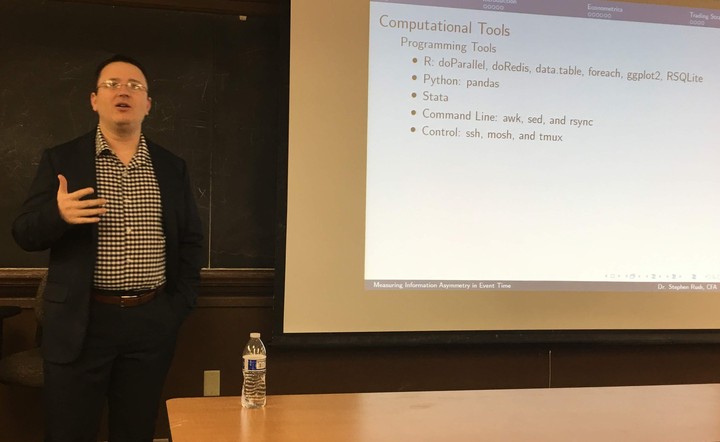
Abstract
I describe the importance of using event time in measure information asymmetry in U.S. equity markets. Information asymmetry between market participants represents a risk that is compensated by a higher expected return for both short-term traders and long-term investors. Firms with greater information asymmetry have higher expected returns and lower prices while firms with lower information asymmetry have lower expected returns and higher prices. A long/short trading strategy built on these results produces abnormal returns of 11.45% per year.
Date
Feb 14, 2020 4:00 PM
Location
University of Toledo Department of Mathematics and Statistics
2801 W. Bancroft St, Toledo, OH 43606